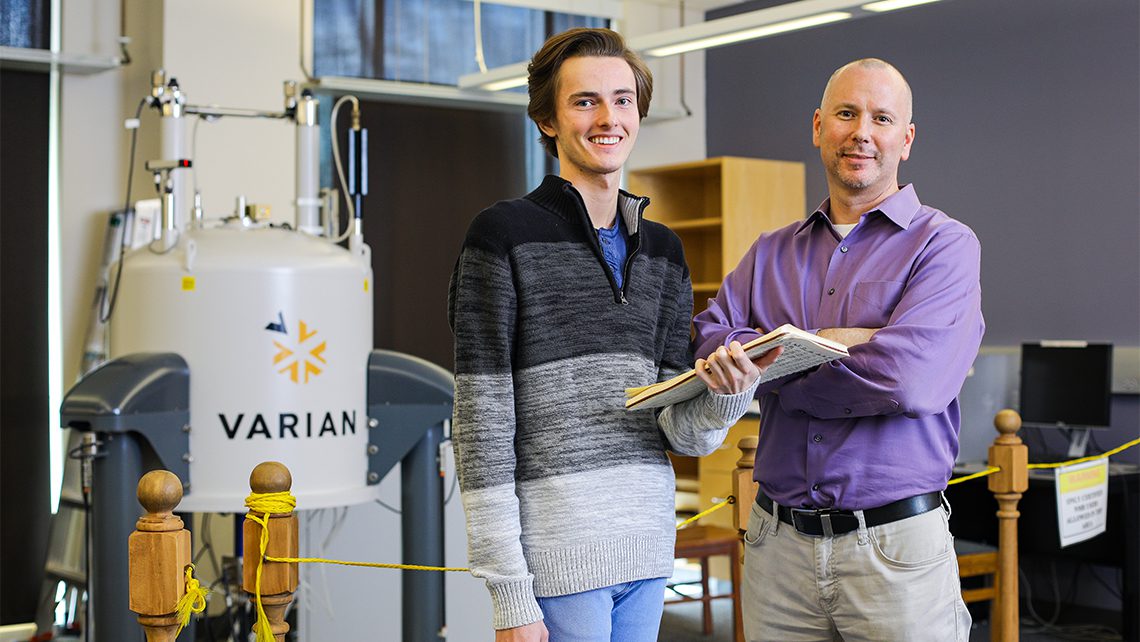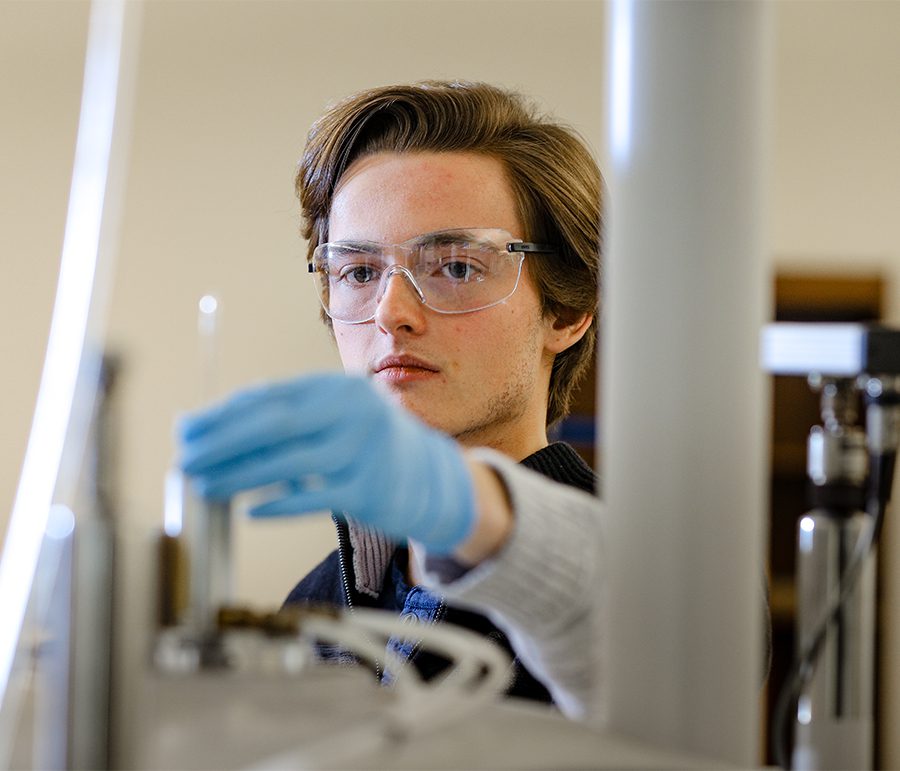Studying the origins of life

Where did we come from? Probably few questions are as challenging to scientists as this one. But Furman students working with chemistry professor Greg Springsteen may have come a step closer to understanding the beginnings of life on Earth.
Research covering five years of experiments on the topic has been published in Nature Communications. The experiments were conducted by two Furman undergraduates working in Springsteen’s lab—Julia Nelson ’15 and Chandler Joel Rhea ’19—and by professor Ramanarayanan Krishnamurthy and his team at The Scripps Research Institute (TSRI). They demonstrate that critical chemical reactions that support life today could have been carried out with elements likely present on the planet four billion years ago.
Their findings have created quite a stir among the scientific community, spawning a flurry of media coverage.
In other words, said Springsteen, “The research establishes a potential chemical precursor to the citric acid cycle (TCA cycle), which may have been functional on the early Earth prior to the origins of life.”

Chandler Joel Rhea is one of two Furman undergraduate students who helped Springsteen with the research. The other, Julia Nelson, graduated in 2015.
The guiding hypothesis behind the study is the notion that the chemistry of life is driven by a network of reactions known as metabolism; and the types of reactions, and the routes they take in this metabolism are remarkably consistent across living systems.
Within this metabolic network of life, researchers used their understanding of reaction mechanisms to look for underlying chemical patterns. In the lab, they determined whether these patterns are sustainable in a reaction flask without the aid of complex biological machinery, i.e. life.
Without getting into the weeds of chemical reactions, Springsteen compares the research question to the modern highway system. “Wagon trails were templates for Route 66. The twists and turns of the modern pathways tell us about the challenges of the original route,” he said during an interview appearing on Gizmodo. Suggesting a sort of chemical reaction imprinting phenomenon, Springsteen said, “We think biology mapped itself onto preexisting chemical pathways on the early Earth.”
“With this work, we are attempting to identify original reaction pathways that may have been co-opted by early catalysts to generate self-reinforcing chemical systems,” Springsteen said. “We hypothesize that these original byways may have become ‘frozen’ as core components of our metabolism, which are now recognizable as we peel away the layers of complexity that subsequently evolved.”
The experiments involved two functional TCA cycle precursors. One was established in experiments carried out by Furman undergraduates Nelson and Rhea, who worked alongside Springsteen. The experiments involving the other TCA cycle predecessor took place at California-based TSRI.
Nelson, now studying at the Medical University of South Carolina, ran many of the project’s foundational experiments in 2013, and pursued the research for three years including the summer following graduation from Furman.
Rhea joined Springsteen’s lab in spring 2016 and continued investigating the project through its completion in fall 2017. Working toward a degree in neuroscience at Furman, Rhea will engage in a lab follow-up study in the spring.
“The success we’ve seen on the project demonstrates the power and importance of faculty working directly with undergraduates as colleagues outside of the classroom,” Springsteen said.
Nelson said she originally got involved with the study due to Springsteen’s enthusiasm for the subject and the impact the work could have on the field. “This project evolved organically, pun intended, from the efforts in our lab over several summers—we knew we were on to something exciting,” she said.
Funding for the study was provided by the National Science Foundation (NSF) and NASA through the Center for Chemical Evolution.
For more information, contact Greg Springsteen, Furman University Department of Chemistry, greg.springsteen@furman.edu, or 864-294-2763.